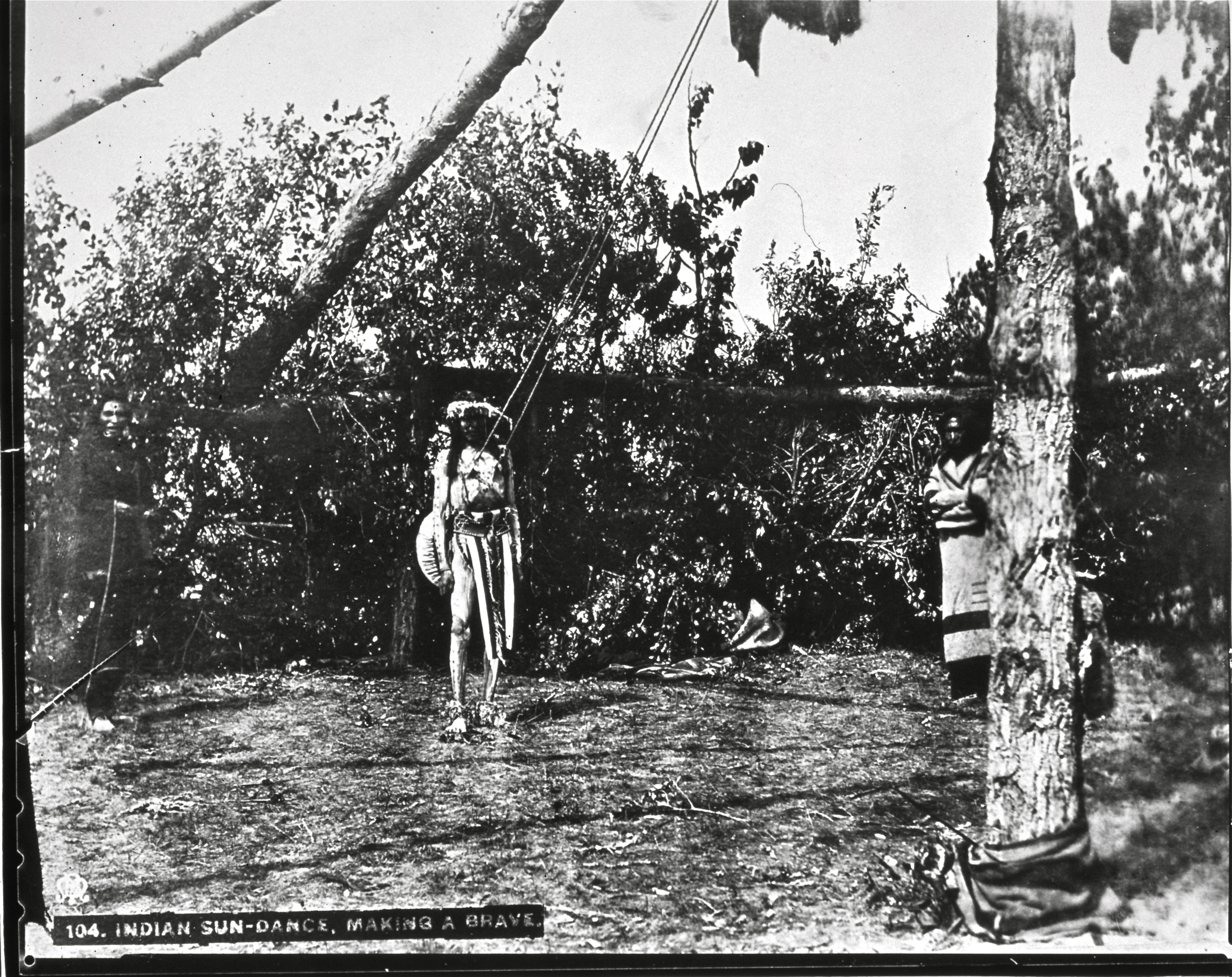By Joanna Cohan Scherer
The Dance Photographed
In one of the accounts Boorne (MacFarlane 1939: 18-19) relates when during the ceremony he was able to take photographs. I have attempted to correlate the surviving photographs with the photographer’s textual account.
"After this [counting the dancer’s coups] had gone on for some time, and the Indians being greatly interested I managed to get a photograph [Fig. 2], not an easy thing as the light in the lodge was not at all good, without attracting much attention. Then the boy lay down on his back at the foot of the Medicine Pole in the centre, and the Chief Medicine Man took a knife, and pinching up a portion of the muscle on each breast, cut a small gash on each side of his fingers on both breasts, and ran a wooden sliver through each side leaving them sticking in the flesh like a butcher’s skewer through a piece of meat. He then turned the boy over and performed the same operation in the muscles of his back, under each shoulder blade.
"This done, the boy jumped to his feet (I got another photograph) [Fig 3] and with the reed whistle in his mouth, a heavy medicine drum 10 was hung by pieces of raw-hide to the slivers in his back, and the pieces of wood in his breast were fastened to the ends of a raw-hide lariat which was passed up and over the fork of the Medicine Pole. (I secured another photograph of this). He then went up to the Medicine Pole, threw his arms around it, and put his lips to a notch cut in the side for the purpose, removing the little whistle for a moment to do so. He was supposed to derive comfort and strength from the notch in the Medicine Pole, to enable him to carry on the ordeal. [Fig 4].
"He then made a few spectacular tugs at the lariat, by leaning back and throwing his whole weight on the flesh of his chest to show that he was game (I got another photograph), and then commenced to dance around the pole, leaning heavily on the rope so as to extend the muscles of his chest and tear them right out, which in a few minutes he did. After this he made a quick and strong jerk on the drum fastened in his back and tore it out, throwing it from him. […]
"Three more young bucks went through the ordeal that evening, and several more the next day. [Fig. 5] All these boys were in a weakened condition before undertaking the ordeal from the month’s ‘preparation’ which they have to undergo beforehand by retiring alone to the bush to commune with their guardian spirits, living only on berries and water, and anything that they can catch with their hands.
"The next day, and the following ones, dancing and ceremonies continued. On the evening of the third day they celebrated a great feast in honor of the braves. Saskatoon-berry soup, with stewed puppydogs, raised for the purpose, which is very savory to the Indian palate. Much noise and tom tom playing filled the air. I came away."
Next Section: Analysis of the Photographs
10 The participant more likely used an eagle bone whistle and rawhide shield (personal communication Steve Feraca, November 5, 1998).
